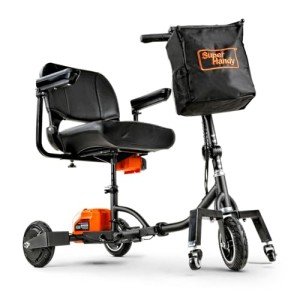Understanding Mobility Devices: Enhancing Independence and Quality of Life
In today's hectic world, the desire for mobility is universal. Nevertheless, certain medical conditions or age-related obstacles can hinder movement, causing a continuous search for assistance. Mobility devices work as necessary tools to enhance independence, enhance quality of life, and allow individuals to engage completely in their communities. This short article offers a thorough overview of mobility devices, including their types, features, selection requirements, and more.
Types of Mobility Devices
Mobility devices vary from easy aids to intricate equipment, tailored to meet numerous needs. Below is a table summarizing common types of mobility devices:
| Type of Device | Description | Suitable For |
|---|---|---|
| Walkers | Four-legged support devices that provide exceptional stability while walking. | Individuals requiring extra support. |
| Walking sticks | Single or three-legged sticks that enhance balance and support walking. | Those with small mobility difficulties. |
| Wheelchairs | Seats mounted on wheels, readily available in manual and electric versions. | People with minimal or no mobility. |
| Scooters | Electric automobiles developed for outside use and ease of navigation. | Those who can't walk cross countries. |
| Crutches | Devices that assist people transfer weight far from a hurt leg. | People recovering from leg injuries. |
| Rollators | Walkers with wheels, seats, and brakes for enhanced mobility. | Users requiring rest choices while strolling. |
| Lift Chairs | Reclining chairs that help users in standing up and taking a seat. | Seniors or those with mobility restrictions. |
| Mobility Scooters | Small electric automobiles for minimal mobility, typically utilized outdoors. | People requiring help over fars away. |
Key Features of Mobility Devices
When picking a mobility gadget, numerous key functions must be thought about to make sure optimum performance and ease of usage:
- Weight Capacity: Understanding the device's weight limitation is vital for safety and efficiency.
- Adjustability: Devices ought to be adjustable in height and width to fit the user comfortably.
- Mobility: Lightweight and foldable alternatives are vital for users who travel or require transport.
- Stability and Safety: Look for features like anti-tip wheels and sturdy structures to improve safety.
- Alleviate of Use: Simple mechanisms and easy to use styles can make a significant difference in daily use.
- Comfort: Ergonomic styles and padded seats can improve the user experience.
Picking the Right Mobility Device
Choosing the best mobility device can be a daunting task. Here are some steps to direct the decision-making procedure:
- Assess Needs: Evaluate the individual's mobility obstacles and day-to-day activities.
- Speak with a Professional: Engage health care professionals who can provide recommendations based upon the person's physical condition.
- Trial Options: If possible, trial different devices to determine comfort and functionality.
- Evaluation Budget: Consider the expense of the gadget, including any additional features or adjustments needed.
- Research study Options: Determine the very best brand names and models by checking out reviews and contrasts.
Table: Comparative Analysis of Popular Mobility Devices
| Gadget | Benefits | Downsides |
|---|---|---|
| Walkers | Exceptional stability, promotes strolling. | Bulky, may limit movement in small spaces. |
| Walking sticks | Lightweight, enhances balance. | May not provide sufficient support for extreme mobility issues. |
| Wheelchairs | Suitable for those with considerable mobility limitations. | Can be troublesome, particularly in indoor environments. |
| Scooters | Great for outdoor usage, simple to maneuver. | Minimal indoor usability, heavier. |
| Rollators | Provides rest alternative, easy to move. | May need more space than standard walkers. |
| Lift Chairs | Comfortable, helps shift from sitting to standing. | More pricey, bigger footprint. |
Regularly Asked Questions (FAQs)
1. What is a mobility device?
A mobility gadget is any tool designed to assist individuals in moving and browsing their environment. This includes walkers, wheelchairs, scooters, and crutches.
2. How do I know which mobility gadget is best for me?
Consider your particular mobility obstacles, physical capabilities, and way of life requirements. Consulting with healthcare professionals can also supply tailored recommendations.
3. Are mobility devices covered by insurance coverage?
Many insurance plans, including Medicare, might cover specific mobility devices. It's crucial to inspect with your insurance coverage supplier for particular coverage information.
4. Can compact mobility scooters lease a mobility gadget rather of buying one?
Yes, numerous medical supply stores and drug stores offer rentals for mobility devices. This alternative is helpful for people with short-term mobility concerns.
5. How can I maintain my mobility device?
Regular upkeep is important. It includes cleaning the gadget, inspecting for wear and tear, and guaranteeing all parts are working properly.
The Impact of Mobility Devices on Quality of Life
Mobility devices significantly improve the quality of life for people with restricted mobility. They foster independence, motivate social interaction, and enhance access to important services and leisure activities.
- Increased Independence: Users can browse their areas, participate in events, and engage in pastimes without relying on others.
- Social Engagement: Mobility devices assist in participation in social gatherings, consequently combating sensations of seclusion.
- Boosted Safety: Devices supply stability and lower the threat of falls, promoting user self-confidence.
Mobility devices are more than simply tools for movement; they are entrances to self-reliance and quality living. By comprehending the different kinds of mobility aids offered, their key functions, and factors to consider for choosing the right device, individuals can make educated choices about their mobility requires. Ultimately, the best mobility device can result in a more active, fulfilling life. Whether it's a walker, wheelchair, or scooter, the right choice contributes considerably to enhancing the mobility and self-reliance of users.

